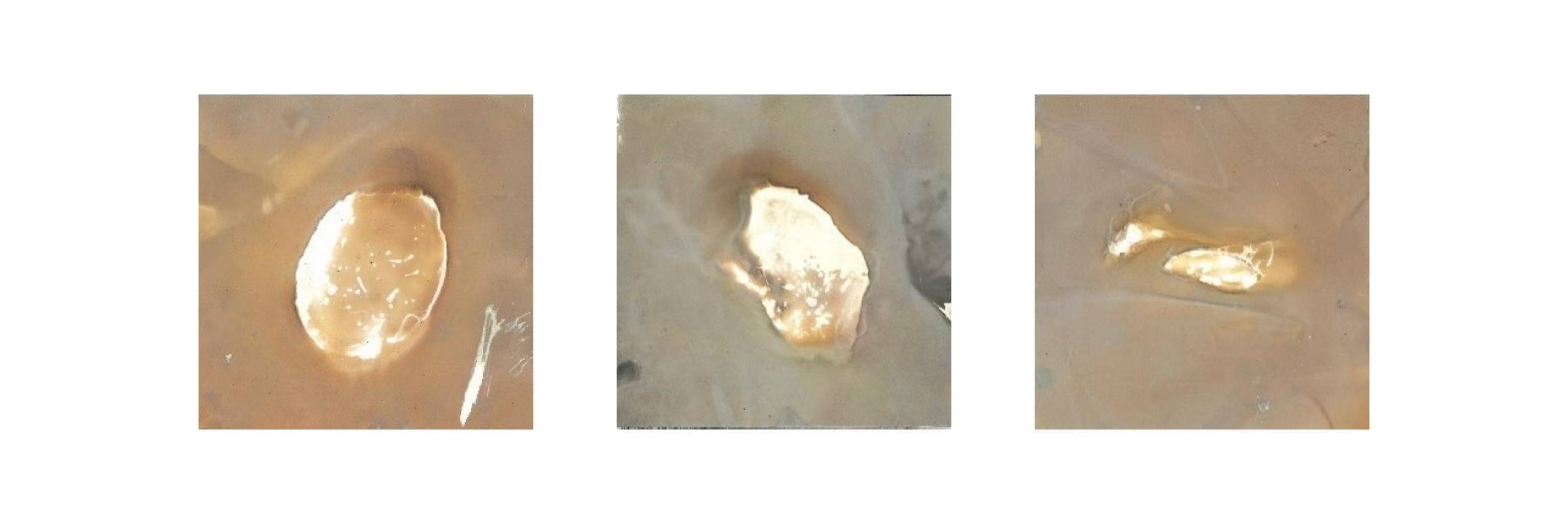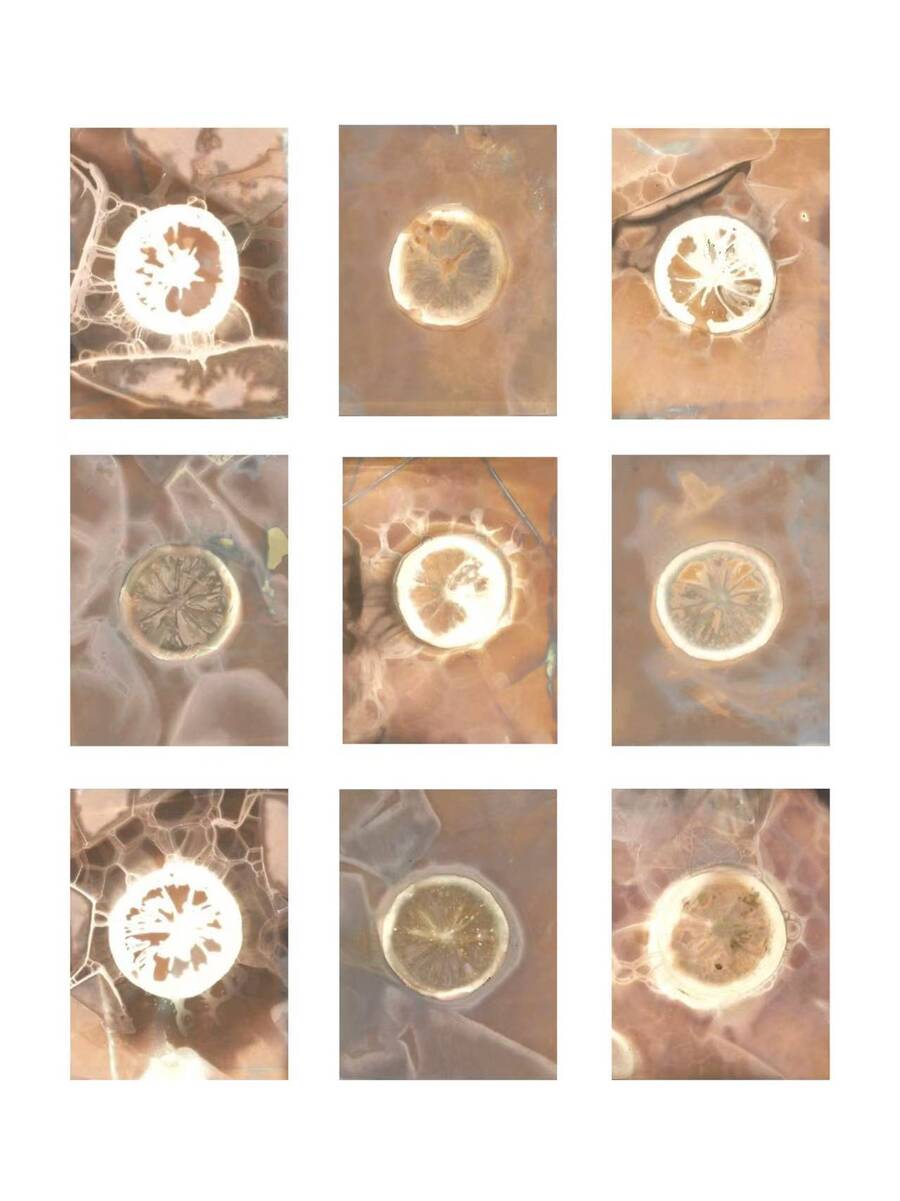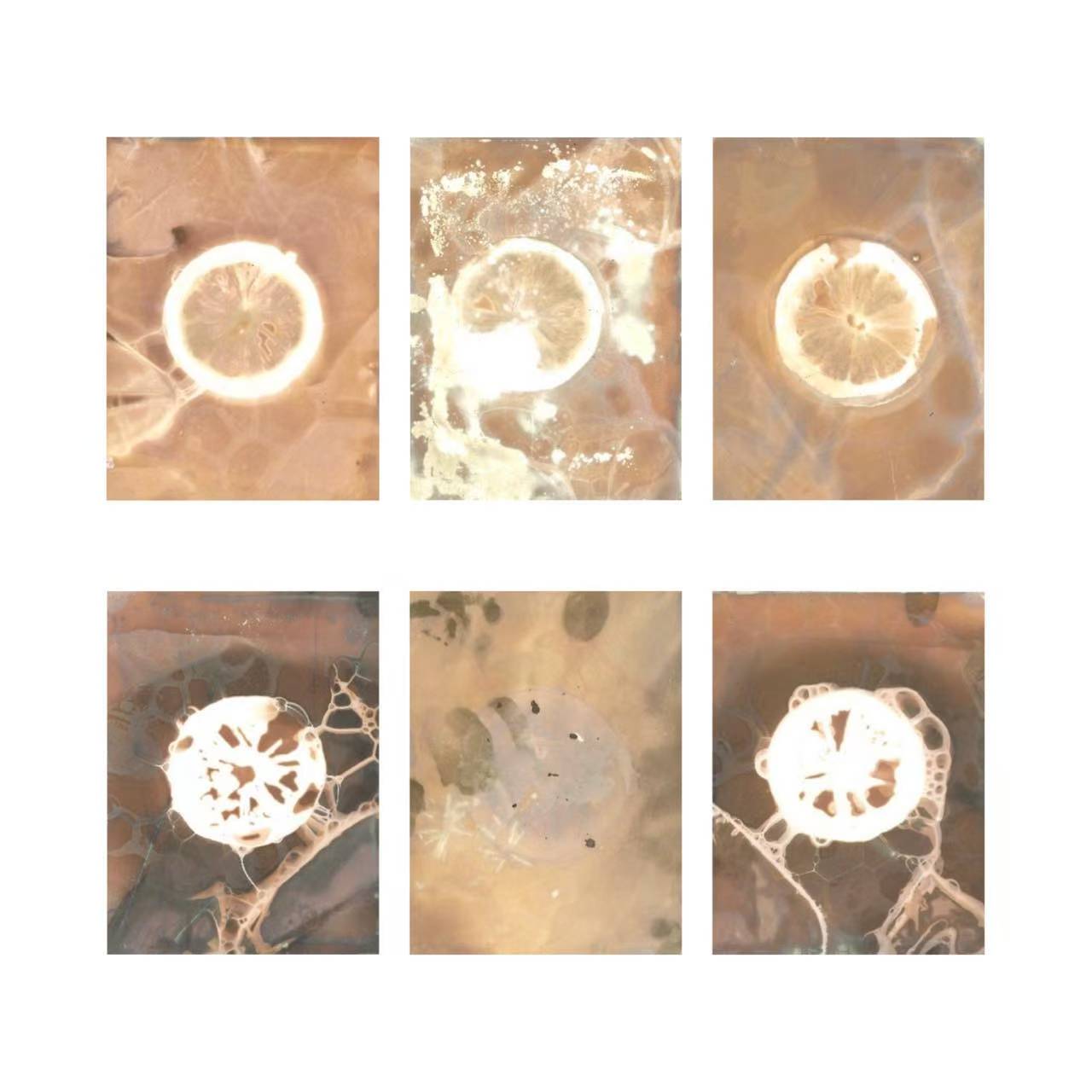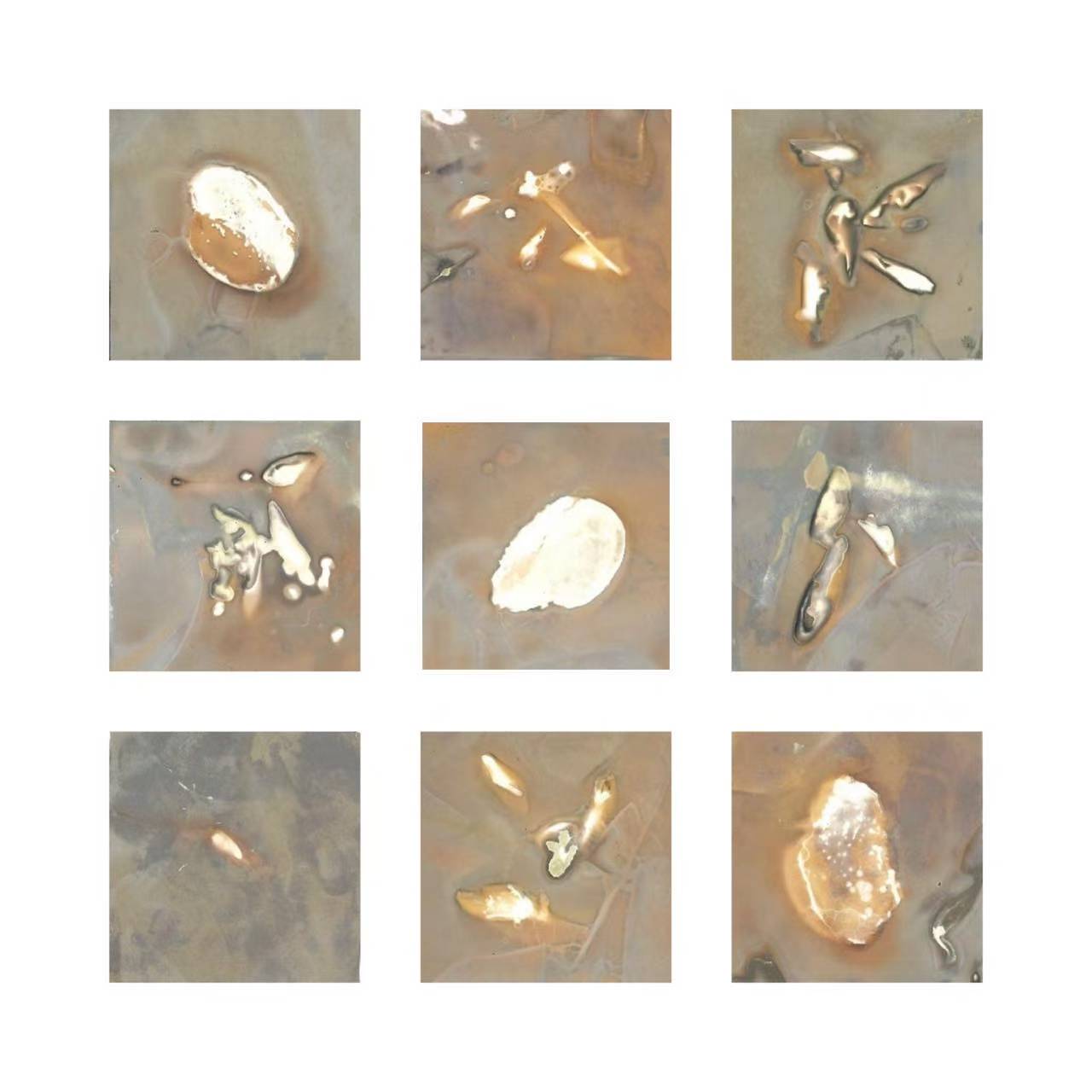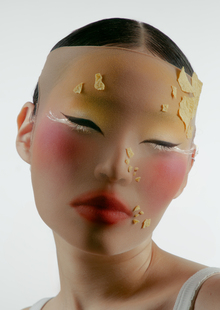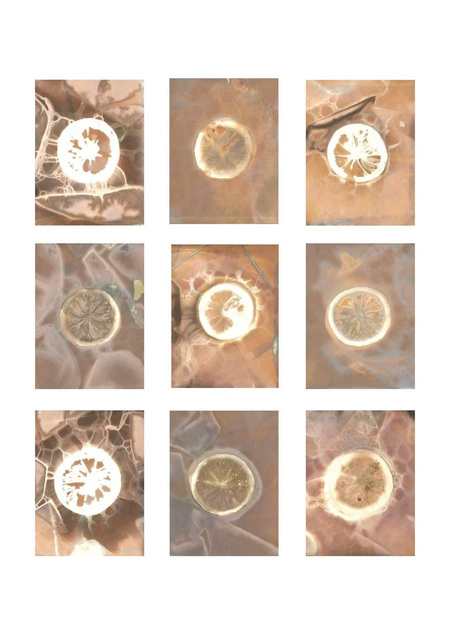
刺激体 Stimulus Body
通过味觉显影实验,探讨人类如何将感官刺激转化为生存经验与记忆图像。 A taste development experiment exploring how humans transform sensory stimuli into survival experiences and mnemonic imprints.
本作品以味觉中最具刺激性的“酸”与“辣”为线索,通过食材在感光相纸上的显影实验,模拟人体在面对刺激性物质时的生理反应与情绪加工过程。阳光作为自然能量的触发源,与柠檬、小米辣等食材发生光化学作用,留下裂痕、晕染与腐蚀痕迹,映射出身体在“痛觉—反应—适应”机制中的轨迹。
食材与感光材料之间的互动,不只是生物化学反应的视觉记录,更隐喻现代人如何在日常中消化外界的剧烈感受,将刺激、痛苦乃至混乱,转化为可感、可存储的经验与记忆。图像中那些不可控的裂纹与痕迹,不仅是材料变化的结果,也是身体经验中真实的印记。
这是一次关于感知与生存机制的实验,一场微观层面的生命显影过程。它回应的,不只是味觉,更是我们如何面对并重构每一次与世界接触后留下的痕迹。
This work traces the most provocative taste sensations—"sour» and «spicy"—through a photographic development experiment using ingredients on light-sensitive paper, simulating the physiological reactions and emotional processing triggered by irritants in the human body. Sunlight, as a natural energy source, initiates photochemical interactions with lemon and chili, leaving cracks, smudges, and corrosive marks that map the body’s trajectory through the «pain-response-adaptation» mechanism.
The interplay between organic ingredients and photosensitive materials transcends mere visual documentation of biochemical reactions. It metaphorically reflects how modern individuals digest intense external stimuli in daily life, transforming agitation, pain, and chaos into perceptible, storable experiences and memories. The uncontrollable cracks and textures in the images are not just material transformations, but authentic imprints of bodily experience.
This is an experiment on perception and survival mechanisms—a microscopic revelation of life’s development process. It responds not merely to taste, but to how we confront and reconstruct the traces left by every encounter with the world.
